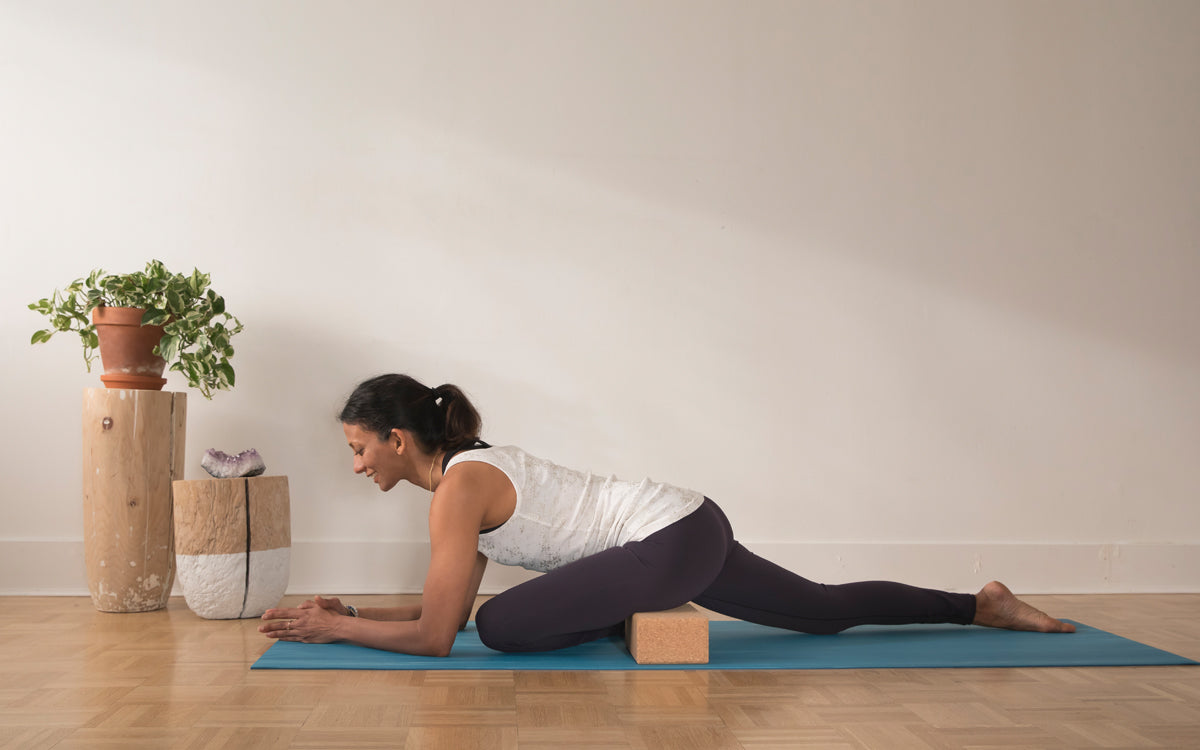Many of us love our extremes. We sit at our desks for long periods of time and follow it up with activities such as cycling, running or working out. The consistent switch from stationary to high-intensity movement is hard on the muscles and can bring a lot of tension to the hips. For some, pigeon pose is a necessary daily staple, and in most yoga classes from power vinyasa to candlelit Yin, you’ll come across it. This classic hip opener has limitless benefits, whether you’re a runner, a cyclist, work in an office, or anything in between. The challenge is, pigeon pose isn’t naturally comfortable for everyone. But, with the right props and a few tips, pigeon pose could be your new best friend.

One of the most common challenges with pigeon pose is the hip is lifted too far off the ground. This can bring tension into the lower back and knees. Place a block underneath you so your hips remain flat and your body can fully relax. As your hips loosen and become more flexible, play around with the different heights of blocks, or substitute for a chip foam block or folded blanket. For even more support here, place two more blocks under your elbows.

Sometimes it’s not the glute that needs some love, but your hip flexors! From sitting around at a desk all day, to rushing out for an evening run, our hip flexors are exhausted and tight – which means pigeon pose can be painful when trying to keep the lower back even and the back thigh rotating internally. Placing a bolster to support both sides of the hips will relieve any tension in the lower back, and provide a comfortable base. You can also place your front heel against a block for support to ensure your ankle doesn’t rotate inwards. This will protect your knee and maintain the integrity of your leg position.

Placing the bolster under your head will help relieve tension in the neck and shoulders that can manifest from staring at phones and computers all day. Use the bolster to rest either your forehead or entire upper body. Relax and breathe into the pose. Feel your shoulders moving away from your ears, and feel free to turn your head to either side to release more tension. This version of pigeon is fully supported - your head is resting on the bolster, and your belly on your thighs. This is the perfect place to hang out a while!

King pigeon is unarguably a beautiful and impressive-looking pose, as well as being home to a host of benefits for the body. A more active version of the traditional extended pigeon, this bound version will open up not only your hips, but the entire front line of the body. For most yogis, a strap will come in useful here. Whether you have a looped strap or a straight one, looping it around the top of your foot and gently walking your hands closer to the foot will gradually open up the quad, triceps and front body. Using the strap, even if you can reach your toes will ensure your shoulders stay down, and your ribs will not pop forward.
Using props in pigeon pose will aid in alignment, unlock tension and make your pigeon feel extra juicy, whether you’re practicing in the morning, after a workout, or as a way to unwind before bed.

















































